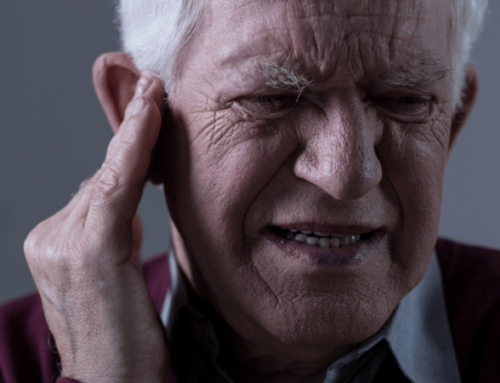Stiff Neck?
Levator Scapulae Muscle
Ever wake up with a neck so stiff it feels like you slept on a pile of bricks? I have. It’s the kind of pain that makes turning your head feel like a full-body workout. One minute you’re fine, the next you’re awkwardly swiveling your whole body just to look left at a stoplight. Sound familiar?
Most of the time, that awful tightness comes from one muscle: the levator scapula. It’s a small muscle that runs from the top of your shoulder to the side of your neck. You probably don’t think about it—until it starts screaming at you.
I’ve dealt with it after long days hunched over my laptop. Add stress to the mix, and boom—my neck locks up. And I know I’m not alone. We all get caught up in work, scrolling on our phones, or driving around town without realizing how tense we’ve become.
So what can you do about it?
First, you’ve got to understand what’s causing it. Maybe it’s bad posture. Maybe you’re stressed out or clenching your shoulders without realizing it. Sometimes it’s all of the above.
And that pain? It doesn’t just stay in the neck. Tight levator scapulae can mess with your shoulders, too. Along with other muscles like the supraspinatus and infraspinatus, it can trigger deep, nagging pain that feels like it’s coming from nowhere.
But here’s the good news—you can fix it. There are ways to stretch, loosen, and calm those angry muscles. I’ve tried a few myself, from heat packs and massage to just taking breaks during the day to roll my shoulders and breathe.
If you’re tired of feeling like a robot with a jammed neck, stick with me. Let’s walk through what helps, what doesn’t, and how to finally get some relief. Because honestly, life’s too short to live with a neck that won’t turn.
What is the function of the Levator Scapulae?
Nestled within the intricate musculoskeletal framework of the upper back and neck, the levator scapulae muscle emerges as a pivotal anatomical entity. Its fundamental role resides in effecting the elevation and rotation of the scapula, an essential osseous component of the shoulder girdle. This orchestration of movement is especially pronounced during arm elevation, as the levator scapulae’s engagement facilitates scapular elevation, a prelude to the arm’s upward trajectory. Additionally, the muscle’s subtle yet essential contribution extends to the realm of neck rotation, wherein its controlled contraction allows for the graceful and coordinated turning of the head. The levator scapulae, therefore, assumes a poised position as an inconspicuous yet indispensable facilitator of the seamless interplay between shoulder and neck dynamics, embodying an embodiment of biomechanical finesse.
The Actions of the Levator Scapulae
The levator scapulae muscle is called into action during a variety of everyday movements that involve the shoulder and neck. Some of these movements include:
1. Shoulder Shrug: The most obvious movement is the shoulder shrug, where you lift your shoulders towards your ears. This action heavily engages the levator scapulae.
2. Carrying a Bag: When you carry a bag or purse over your shoulder, the levator scapulae helps to stabilize and support the weight, preventing the shoulder from drooping.
3. Looking Over Your Shoulder: When you turn your head to look over your shoulder, the levator scapulae assists in this motion by rotating the neck and helping to maintain balance.
4. Raising Your Arm: Any activity that requires raising your arm, such as reaching for an object on a high shelf, activates the levator scapulae to elevate the scapula, allowing for the necessary clearance.
5. Driving: While driving, when you turn your head to check blind spots or look behind you, the levator scapulae contributes to the rotation of the neck.
6. Computer Use: If you spend long hours working at a computer, poor posture can cause tension in the levator scapulae. It tries to stabilize your head and neck when they are tilted forward. Also sitting in a chair with armrests that are too high will trigger this muscle.
7. Phone Use: Holding a phone between your ear and shoulder can cause the levator scapulae to contract as it assists in keeping the shoulder in position.
8. Talking: Turning your head to talk to someone at your side will activate the levator scapulae
9. Swimming: Swimming freestyle activates the levator scapulae when the head is turned from side to side.
10. Sleeping: Sleeping with the neck in a tilted position will affect the levator scapulae.
These are just a few examples of how the levator scapulae is called into action in our daily activities. Its role extends to various movements that involve the coordination between the shoulder and neck, facilitating our mobility and functionality.
An additional manner in which this muscle might experience tightness arises from potential muscular issues or imbalances that disrupt the natural gait. Notably, the shoulders play an instinctive role in aiding walking movements, resulting in potential strain on the levator scapulae. Moreover, the muscle’s susceptibility increases notably when one is battling an infection during periods of illness.
How to Fix Your Stiff Neck
Navigating around potential issues concerning the levator scapulae involves a few prudent strategies. Firstly, consider adjusting your conversation stance by directly facing the person you’re engaging with, transcending the mere rotation of the head. Ensuring your eyewear prescription aligns with your visual needs while reading can also play a substantial role in mitigating strain. Opting for a speaker phone or Bluetooth device rather than wedging the phone against your ear with your shoulder is another wise course of action.
Stretching this muscle is helpful, especially under a warm shower. Gently guide your nose towards the opposing armpit while introducing subtle pressure using your hand can yield considerable comfort.
Of course, you have the option of scheduling a massage with us. A single session often proves sufficient to alleviate the discomfort associated with the levator scapulae, potentially negating the need for an additional visit for physical therapy. Consider paying us a visit prior to making any such appointments – the results might pleasantly surprise you! Schedule now!
Other Articles To Read
Get rid of burning between your shoulder blades






